photographs
People Working in Computer Room
As part of my dissertation I’m working with the Southern California Edison Photographs and Negatives collection at the Huntington Library. The photographic collection is now available online at the Huntington Digital Library. A few years ago, when I first came across this collection, it was only available in-person on a single computer.
I stitched the two photos below into an animated gif, showing the transition within computerized space. The images are from “People working in computer room with 1” tape drives" in the SCE collection at the Huntington. These before and after photos taken in 1966 at SCE appear to show how people would fit alongside and interact with the mainframe computer.
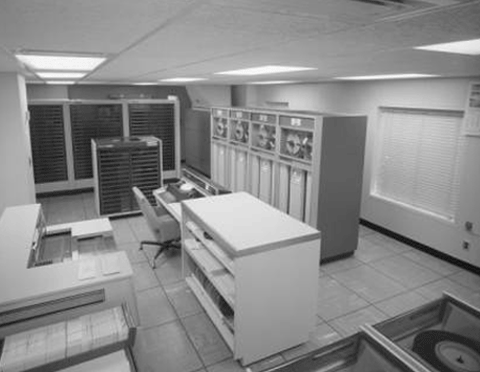
Photographs such as these often show many people in the room, mostly trying to look busy, with a few of them staring at equipment or pretending to use the machine. These staged photographs for internal use are similar to those used for marketing. In both cases the images are designed to show how people and computers would work together.
The mainframe in these photographs is a Control Data Corporation mainframe, and it appears to be a CDC 3200 system.
The Computer History Museum in Silicon Valley has a brochure for the CDC 3200 mainframe (PDF) available online as well.
(Originally published on my old site, “The Digital Imaginary” [imaginary.digital], on August 11th, 2015 – revised and republished March 29th, 2025.)
Univac 494 marketing photographs
I came across this Univac photograph online, showing three people working in a computer room. Using a reverse Google Image Search, it appears that this image and a few others like it were posted online around 2006. From there it looks like the pictures were blogged here and there, recently posted to Pinterest, then making their way to Instagram. I can’t seem to find the original image online, but this one looks like a scan of a partially damaged photo most likely used for marketing. It’s possible that this image could be printed in a brochure other other advertisement.
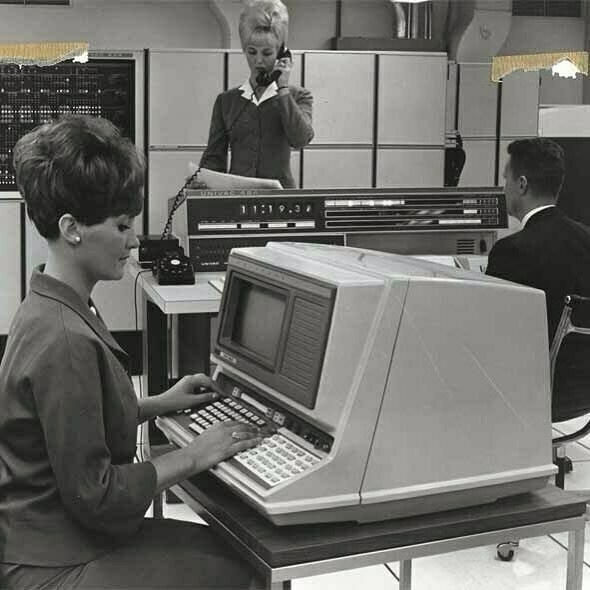
The image above is a little fuzzy, but the mainframe appears to be a Univac 494. This would date the photograph to 1965 or 1966 or so. The additional photographs below offer a closer view of the mainframe console and its peripherals. There’s also more information on the Univac 494 at Ed Thelen’s website (photos linked below).
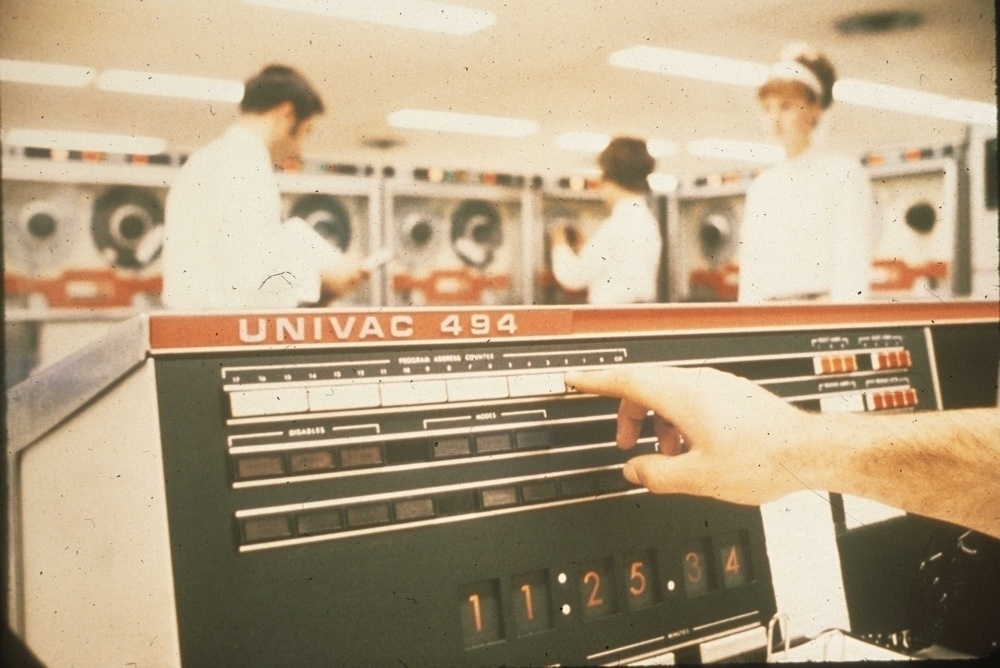
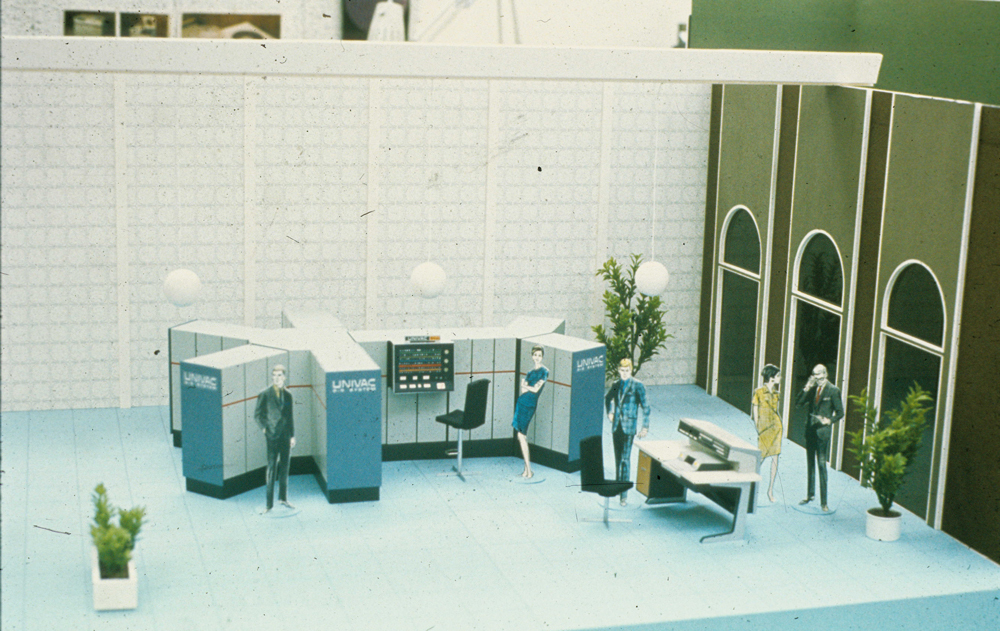
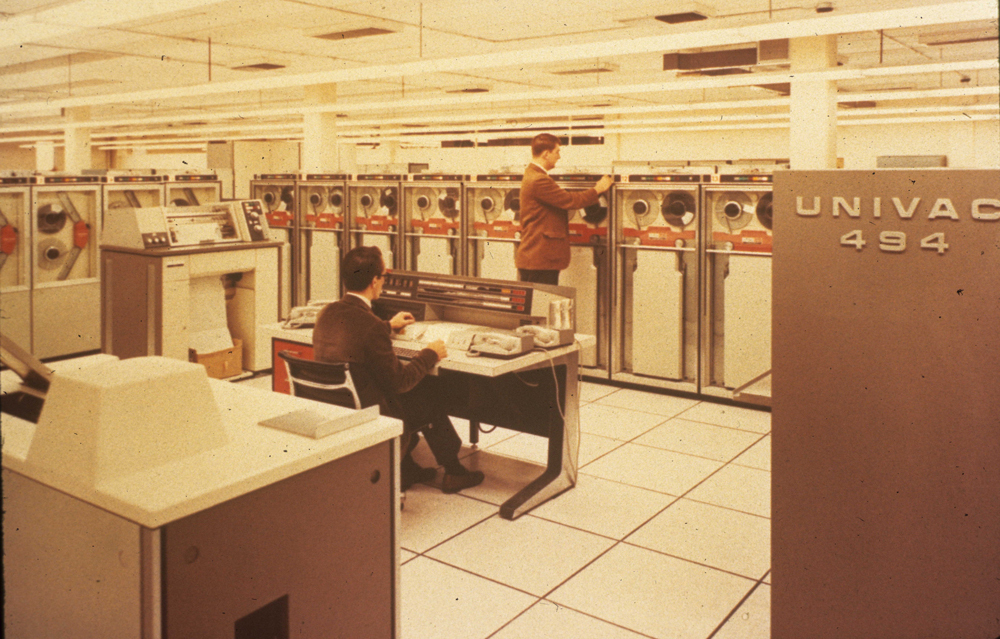
(Originally published on my old site, “The Digital Imaginary” [imaginary.digital], on August 8th, 2015 – revised and republished March 30th, 2025.)
5 MB of Data on 62,500 Punched Cards
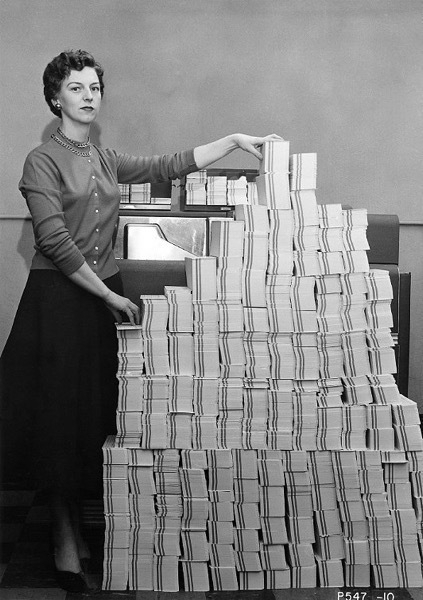
“Programmer standing beside punched cards” “This stack of 62,500 punched cards — 5 MB worth — held the control program for the giant SAGE military computer network.” ca. 1955 (via the Computer History Museum)
Explaining data storage in a visual way has always been difficult, but especially so with the transition to magnetic tape in the 1950s and 1960s.
Photographs of punched cards help show the enormity of the task at hand, and also the materiality of the information.
5 megabytes of data seems pretty insignificant nowadays, when terabyte hard drives are a common feature in personal computers.
1 TB = 1,000,000 MB (now that would be a lot of punched cards!)
From the Computer History Museum’s online exhibit on Memory and Storage.
(Originally published on my old site, "The Digital Imaginary" [imaginary.digital], on March 5th, 2015 -- revised and republished April 2nd, 2025.)